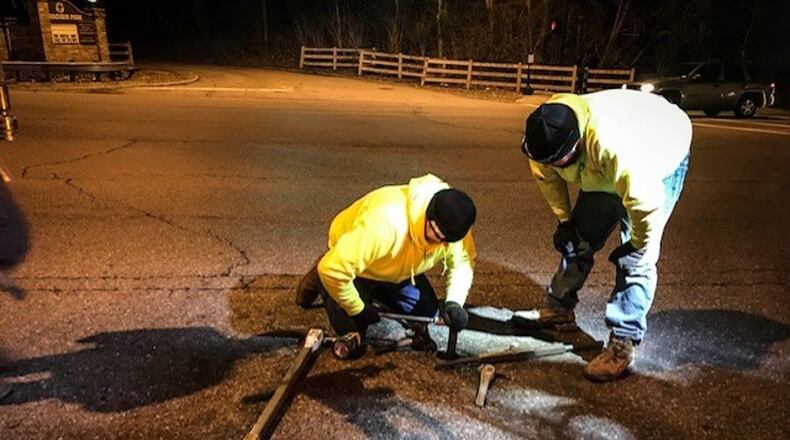Though it wasn’t an especially long emergency, it was an intense time for city workers.
In 72 hours, Dayton’s water dispatch center received 8,958 calls, or about 20 times the number it receives in a typical week at this time of year. Dispatch handled 393 calls in the last week of January and 463 in the first week of February.
“When this happened, our call centers were completely overwhelmed with phone calls,” said Dayton City Manager Shelley Dickstein.
MORE: ‘Nearly catastrophic’ break a glimpse of vulnerabilities to Dayton area’s water
Montgomery County, which gets its water from Dayton, also was flooded with calls.
Between 4:30 p.m. Feb. 13 and 6 a.m. Feb. 16, the county’s environmental services dispatch center, customer service call center and EOC center received 3,255 calls.
The call center and dispatch typically handle 300 to 360 calls per day.
The city used its tech vendor ZenCity to gather real-time information from social media posts while the call centers were swamped with calls, Dickstein said.
“At one point in time, we had 1,000 calls in the que,” she said.
ZenCity helped the city figure out whether the information it was sharing about the water event was helpful and well received and allowed the city to adjust its messaging to satisfy customers and citizens, Dickstein said.
“We had 24,000 comments that were made during the event … that were culminated in a report by ZenCity,” Dickstein said.
MORE: Water outage: Dayton and Montgomery County cancel boil advisories
About 86 percent of comments were positive or neutral, compared to 14 percent that were negative, she said.
The crisis led to a large response by city staff. About 87 city employees worked to manage the crisis.
During the event, Montgomery County field crews and engineering staff worked more than 500 combined hours assisting the city in locating the main break and then pressurizing and restoring water service, said Brianna Wooten, county spokeswoman.
City staff said the water quality was never compromised during the break. The water break was extremely difficult to find because it happened in the river, staff said.
Dayton’s water distribution system has redundancy built in, and the location of the break was isolated by closing in-line valves, said Toni Bankston, a city spokeswoman.
Water can flow around the break, but not through it, she said.
Inspections are taking place daily, but the water level is too high to make a visual inspection of the broken line, she said.
About the Author

